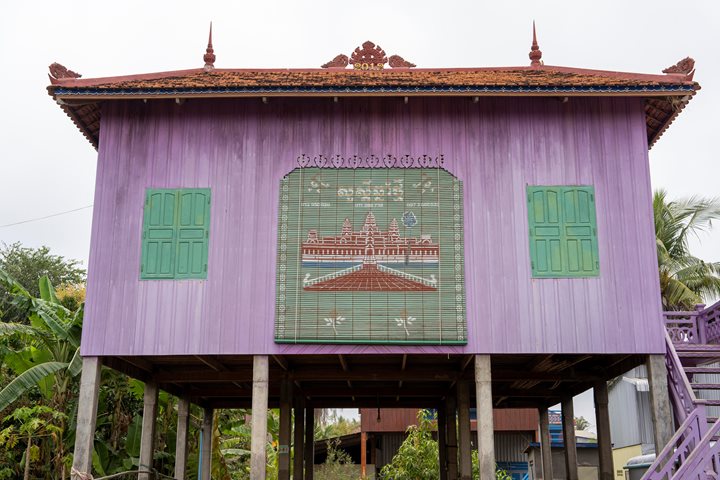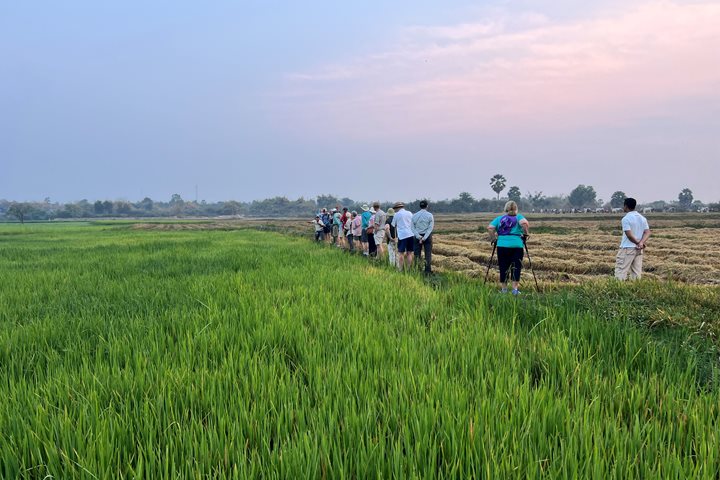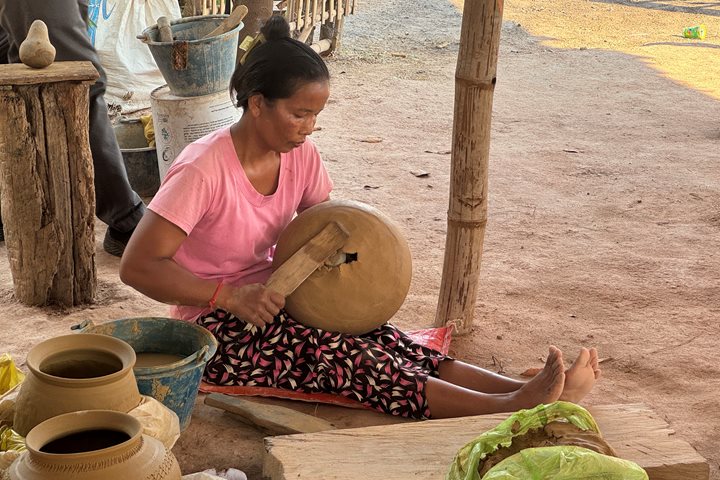At dawn, we are moored where the mighty Mekong meets the Tonle Sap River before splitting into the main Mekong flow and the smaller Tonle Bassac. In front of us Phnom Penh is awakening. We raise the anchor and moor alongside the Jayavarman, the older sister of our ship. From there, we hop on pedal-powered cyclos, an ideal way to navigate the chaotic traffic and discover the city.
We ride to the Post Office with its French colonial architecture then proceed to Wat Phnom, regarded as the place of foundation of the city, and the sacred hill that gave its name to the capital of Cambodia. Passing by the American Embassy, we circle the Central Market and continue on Sisowath Quay to the Royal Palace. Beyond the outer walls of the Palace, a multitude of buildings, from ceremonial rooms to funeral stupas, are surrounded by green gardens. One of the most exquisite is the Temple of the Emerald Buddha, also known as the Silver Pagoda as its floor is made of 5,329 handcrafted silver tiles.
From the palace our transport brings us to the National Museum, a distinctive rust-red building sitting right next to the Royal University of Fine Arts. There, thousands of artifacts from Cambodia's prehistory, Angkorian and post-Angkorian times are on display, illustrating the evolution of art over centuries.
After having lunch at the Topaze restaurant, some of us wander to the nearby Watthan Handicraft Association, lodged in the eponym pagoda of Wat Than, to purchase Khmer silk scarves weaved by persons with disabilities. We should definitely recommend this place to future travellers.
The afternoon was dedicated to commemoration. In 1975, after evacuating the city of Phnom Penh from all its people, the Khmer Rouge converted the school of Tuol Sleng to a high-security interrogation center named S-21. More than 10,000 detainees transited through it, subjected to daily torture. After giving lengthy confessions to their torturers, they were transferred to Cheong Ek's killing fields to be executed. Only seven detainees were spared execution, as the Khmer Rouge needed their specific skills.
Some of our fellow travellers split ways with the main group to meet a group of women from Tabitha, a non-profit organization initiated 20 years ago by Canadian Janne Ritskes. This institution works with 250 Cambodian families to produce woven silk and exquisite accessories in dignity and with a fair income.
After enjoying a barbecue dinner on the main deck of the Jahan, the evening is dedicated to Apsara dance, with a local troop performing a mix of classical and folk dance for us. The traditional dance of Cambodia, with its brightly colored costumes, delicate hand moves, and joyful choreography, almost disappeared during the Khmer Rouge, but is now reviving and being taught to the young generation.
For the most adventurous, Mike and Max organize a special course on nighttime photography in the streets of Phnom Penh. We hop on taxi-remorques, also called tuk-tuks, and head to the Royal Palace and the Monument of Independence to learn about long exposure, starbursts, and panning.







